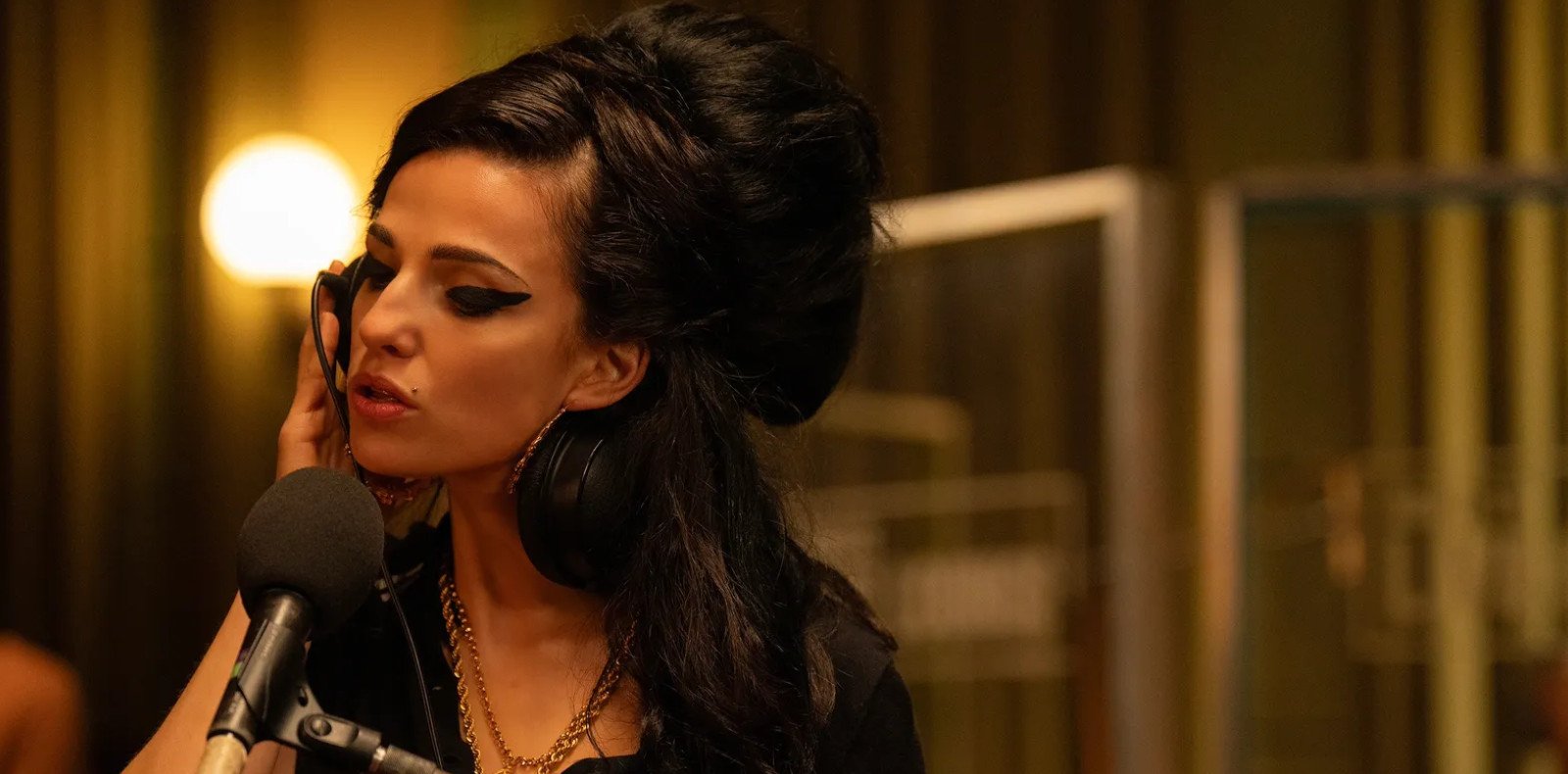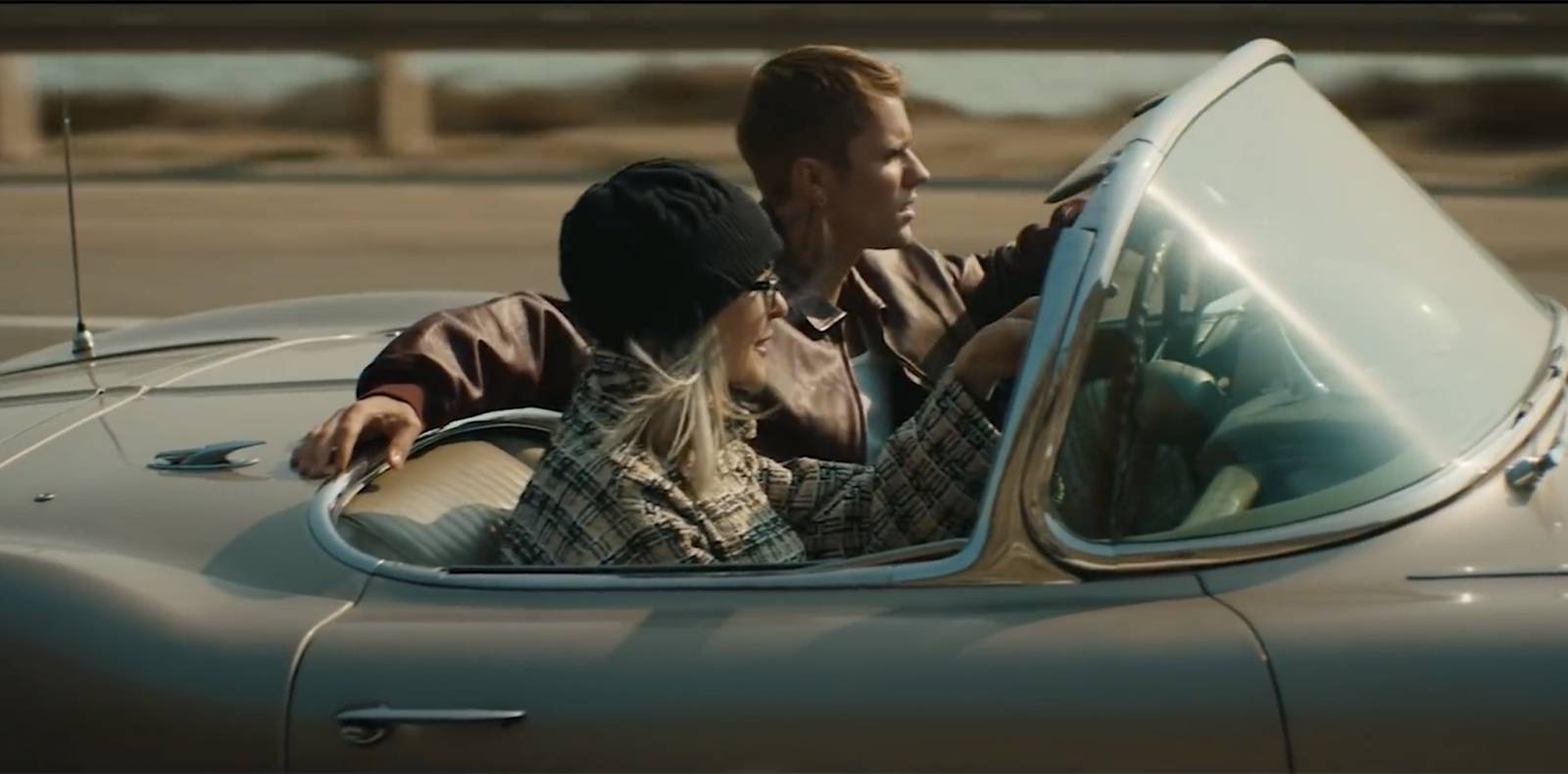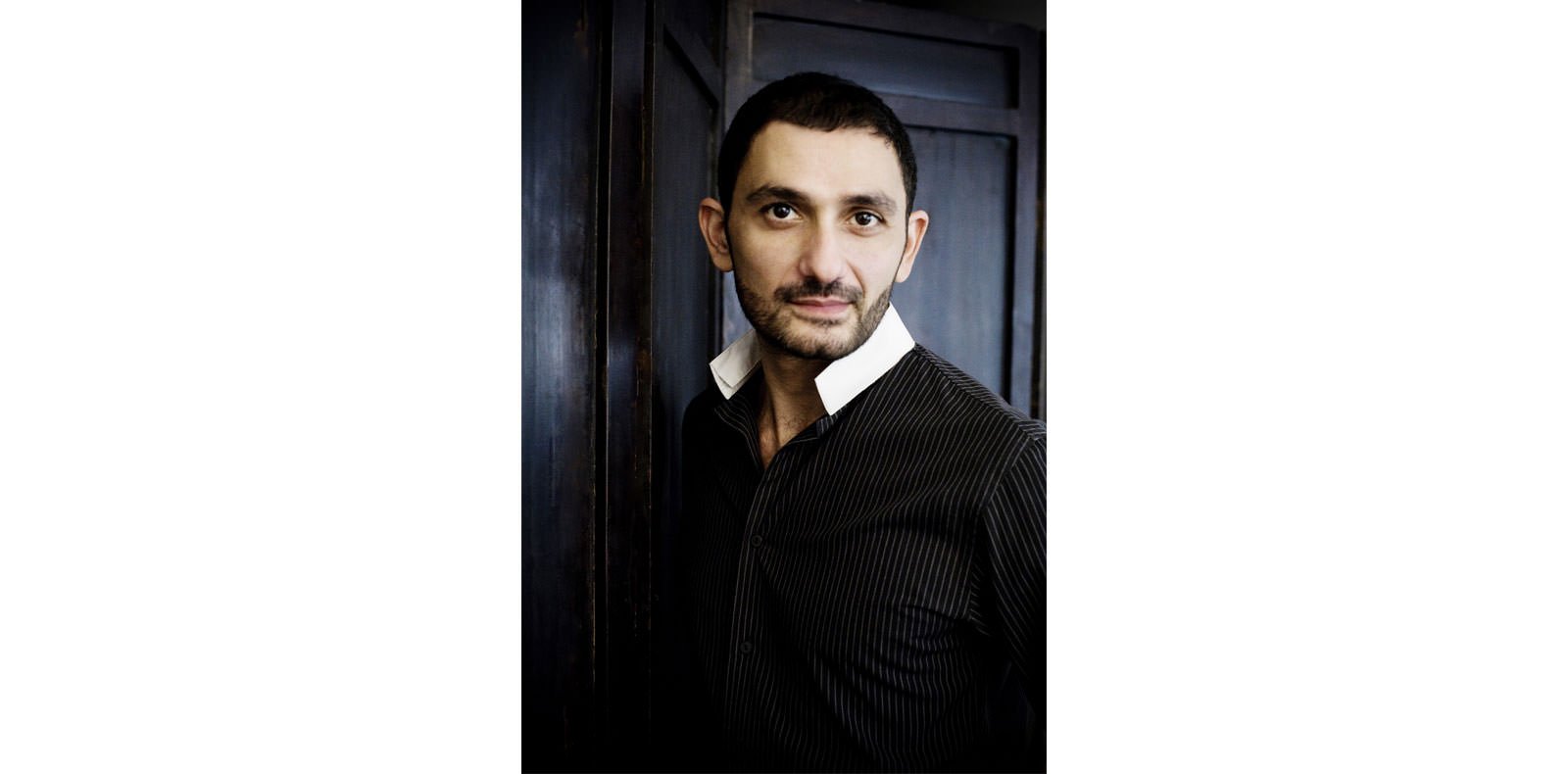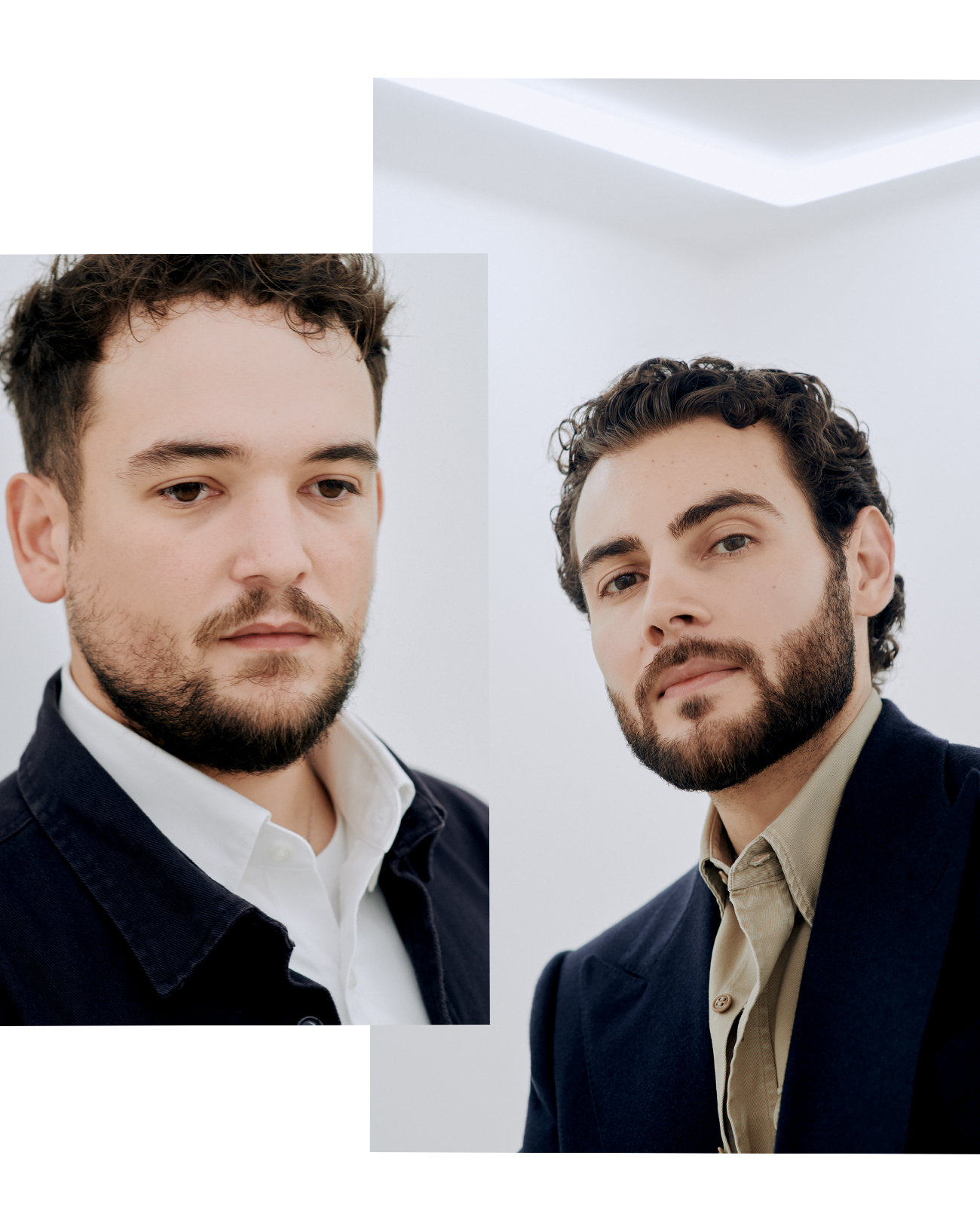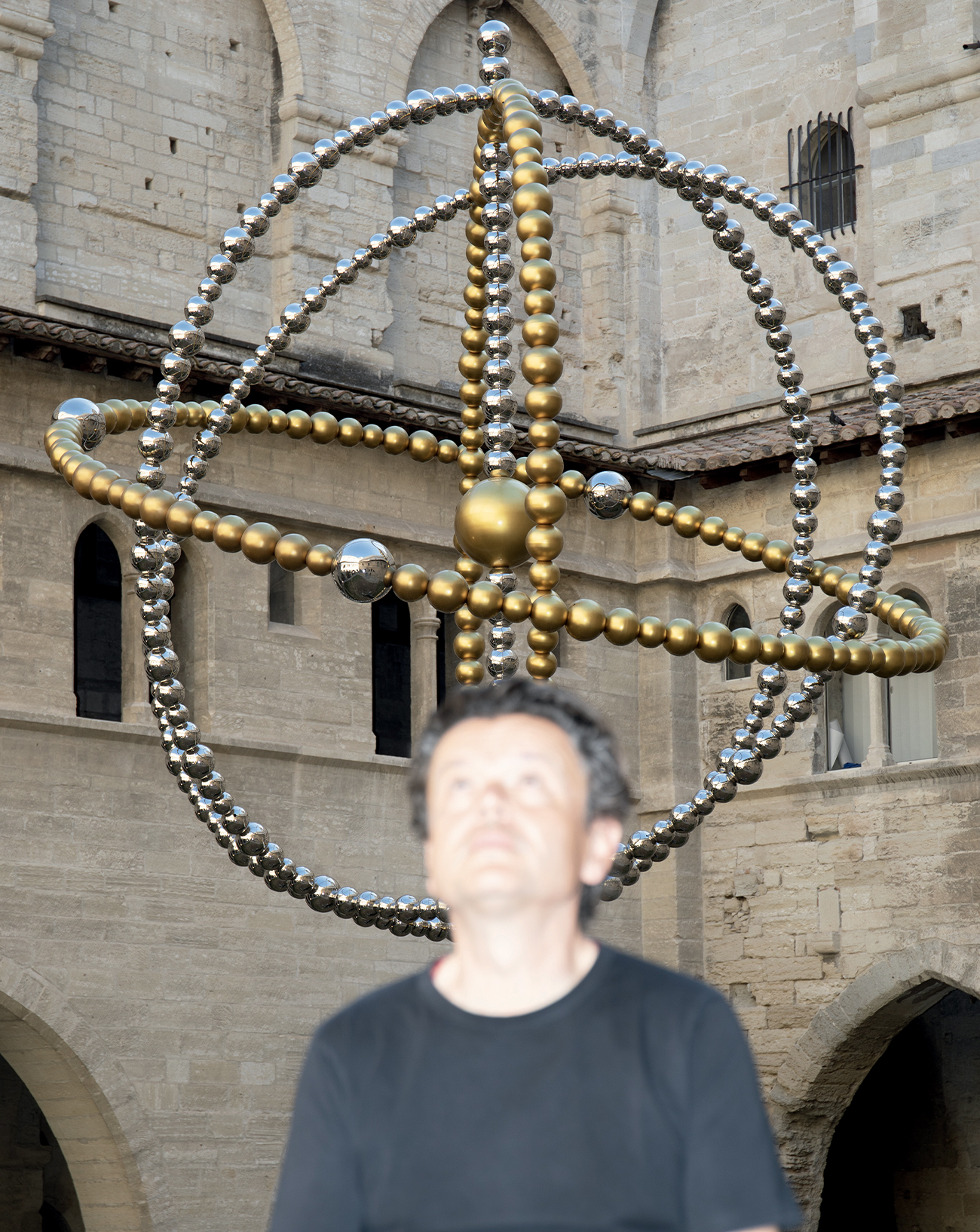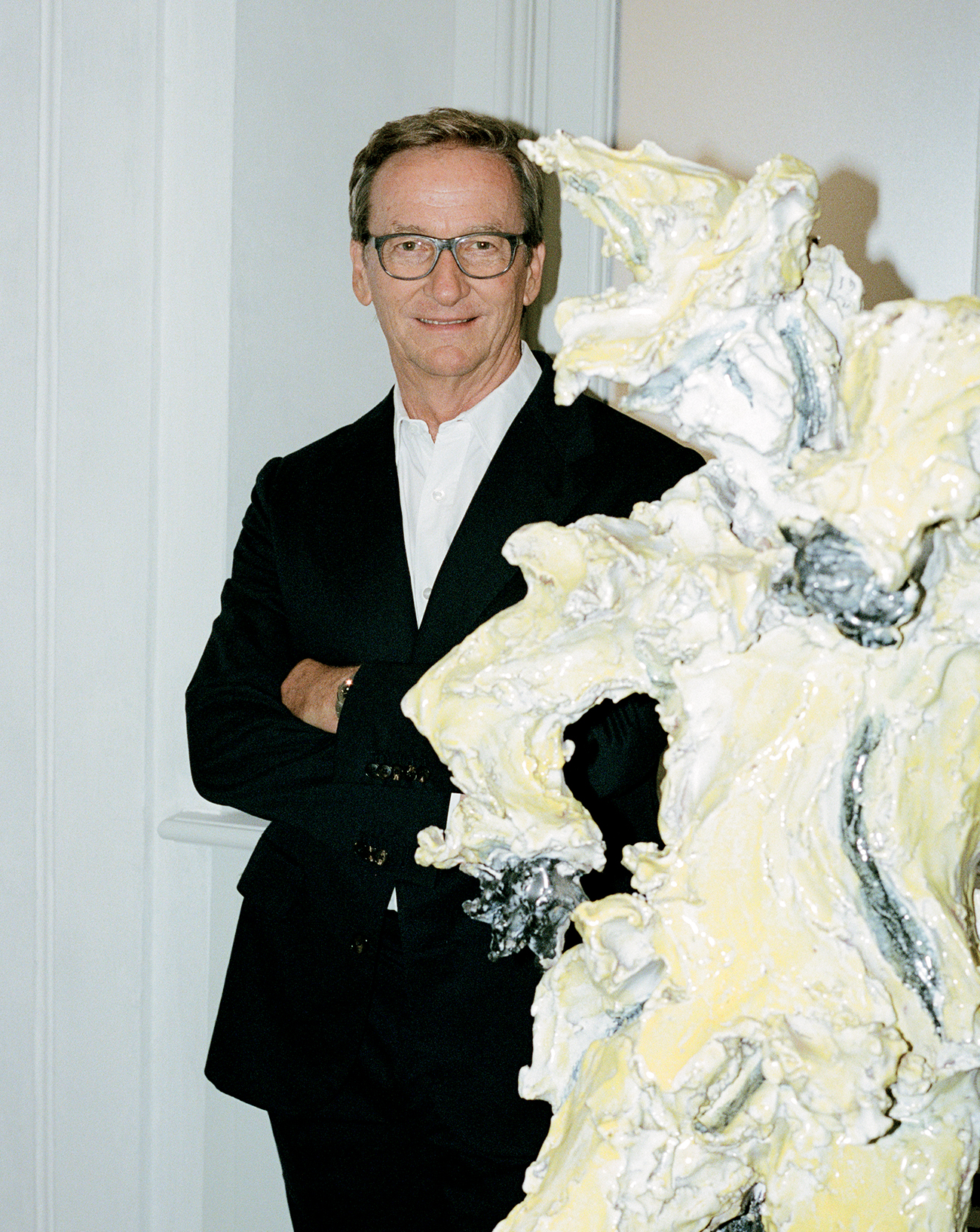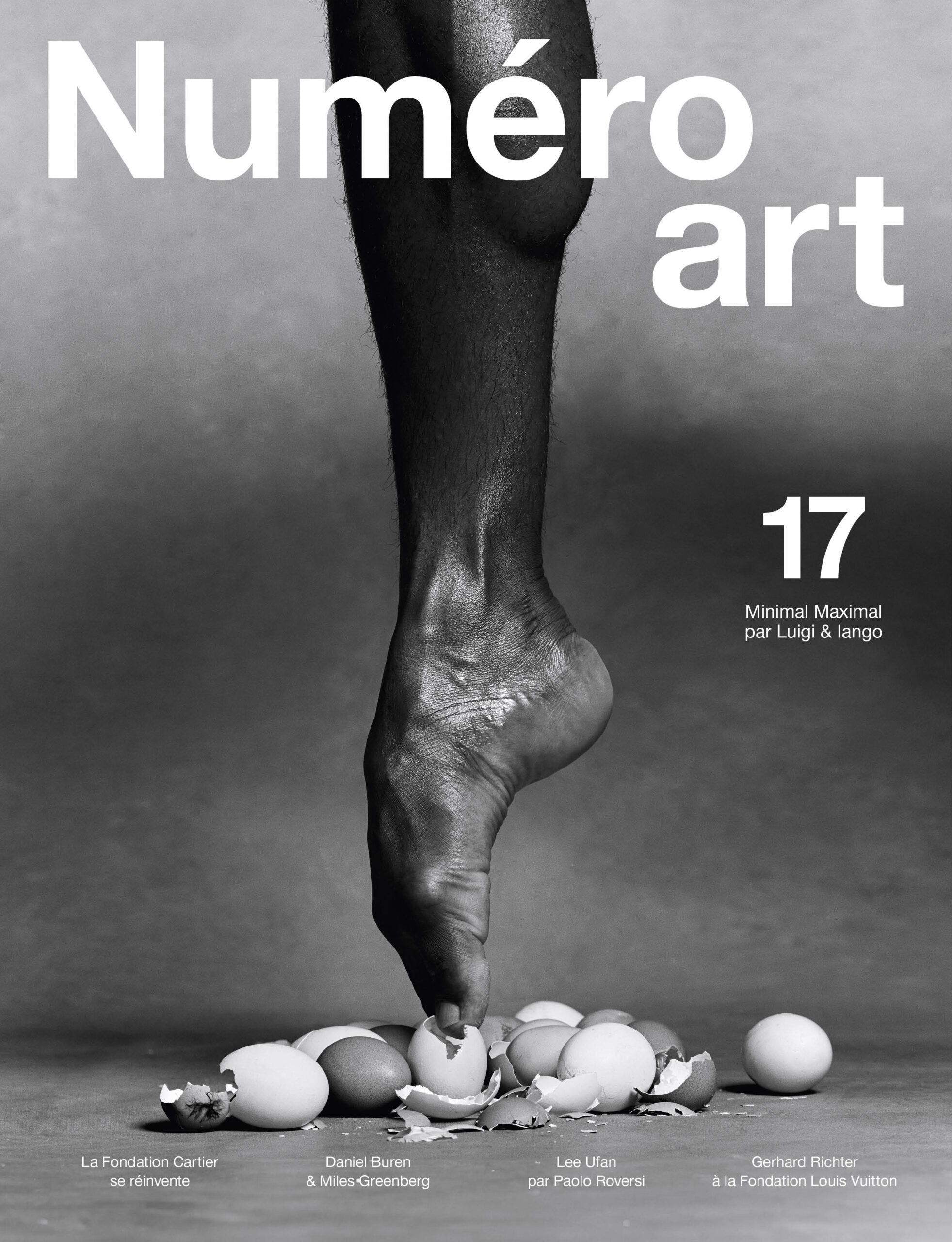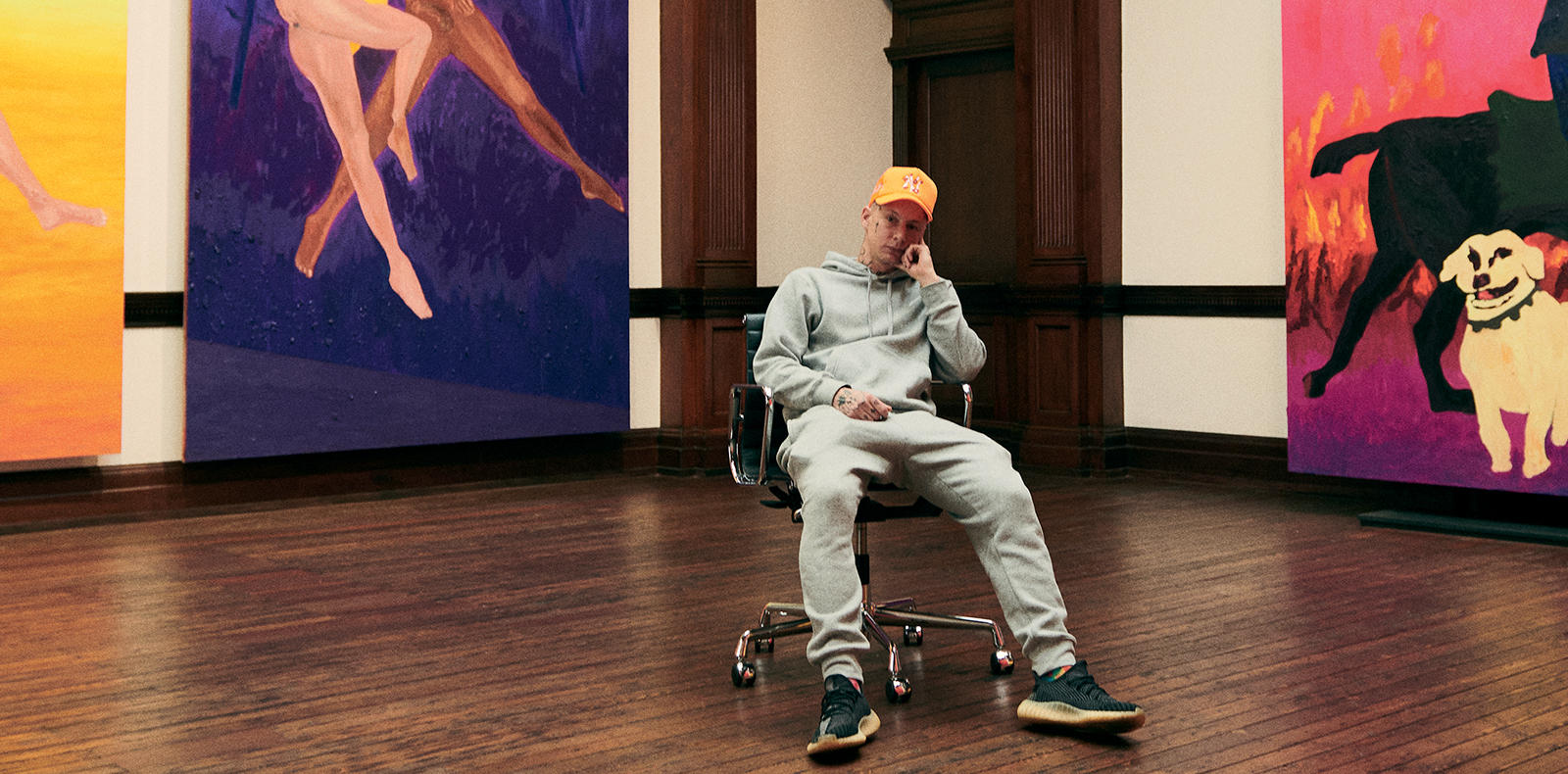
10
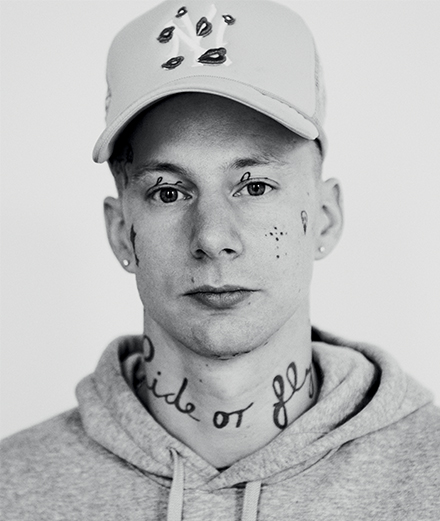
10
Florian Krewer : flaming, fierce and vulnerable, new painting star
On the occasion of his solo show at Michael Werner’s London gallery, the 35-year-old german artist, now based in New York talks to Hans Ulrich about his life and work.
Portraits by : Simon Thiselton,
Text by : Hans Ulrich Obrist.
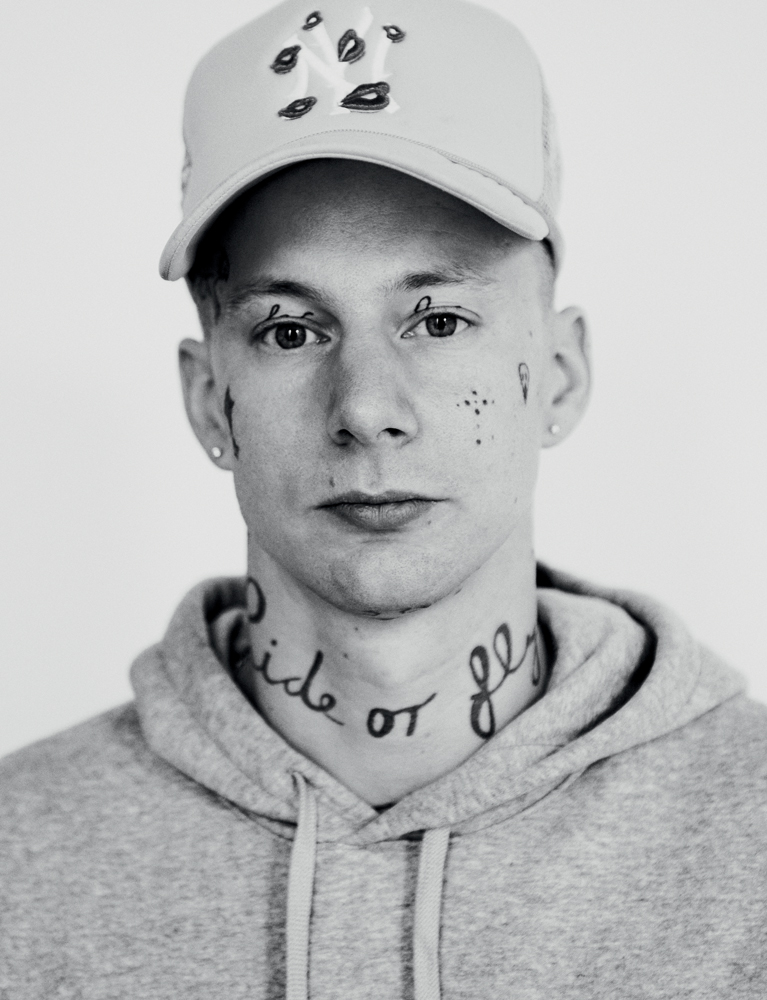
HUO : How did you come to art?
Florian Krewer: It all rather happened by accident. At school I was pretty lazy, I got bad grades. School didn’t interest me. I trained as a house painter and then obtained a professional qualification. I’d always loved drawing and eventually decided to study architecture. In Cologne, I met Professor Nikolaus Bielefeld, who one day gave us an exercise to do: he wanted us to analyse the seasons, their colour combinations. He said that, for example, the combination of yellow and purple in the autumn formed the perfect harmony. No one really understood what we were meant to do. I returned home and went down to the cellar – I knew my sister had stored a small canvas and some tubes of oil paint somewhere. I thought to myself, “I’m going to paint a few flowers and there you go.” In the end, it became something else… I completely let go. It did me so much good. From then on, I started painting all the time. I was worried it would be hard to get into art school, especially a good one, but I applied to Düsseldorf and they accepted me at once.
HUO : What did you learn from Peter Doig in Düsseldorf?
Florian Krewer ; He was amazing! You couldn’t ask for better to be honest. Peter is never hurtful. His criticism is always very precise, it leads you to question what you do. For example, my first characters had something of Baselitz in them. He said to me, “Flo, what’s going on here? Are you painting with your left hand?” It was obvious that I wasn’t trying very hard. I mean, I was painting too fast, I was totally euphoric. He was right, I needed to spend more time on my characters and the other things I was painting. Sometimes I even had them physically on hand, in the form of photos – for example I often used pictures of my mother and my sister. And there he was, on my case again: “Why would a young man like you be interested in that?” At the same time, it’s not easy to know where to start… The things that really move you are so intimate, laying them down on canvas takes time. Peter was very good at coming back to these subjects to make us question our way of painting.
HUO : It seems obvious that Rembrandt was a source of inspiration to you. Was it his handling of light?
Florian Krewer : Yes, and the way of painting. The facial expression too.
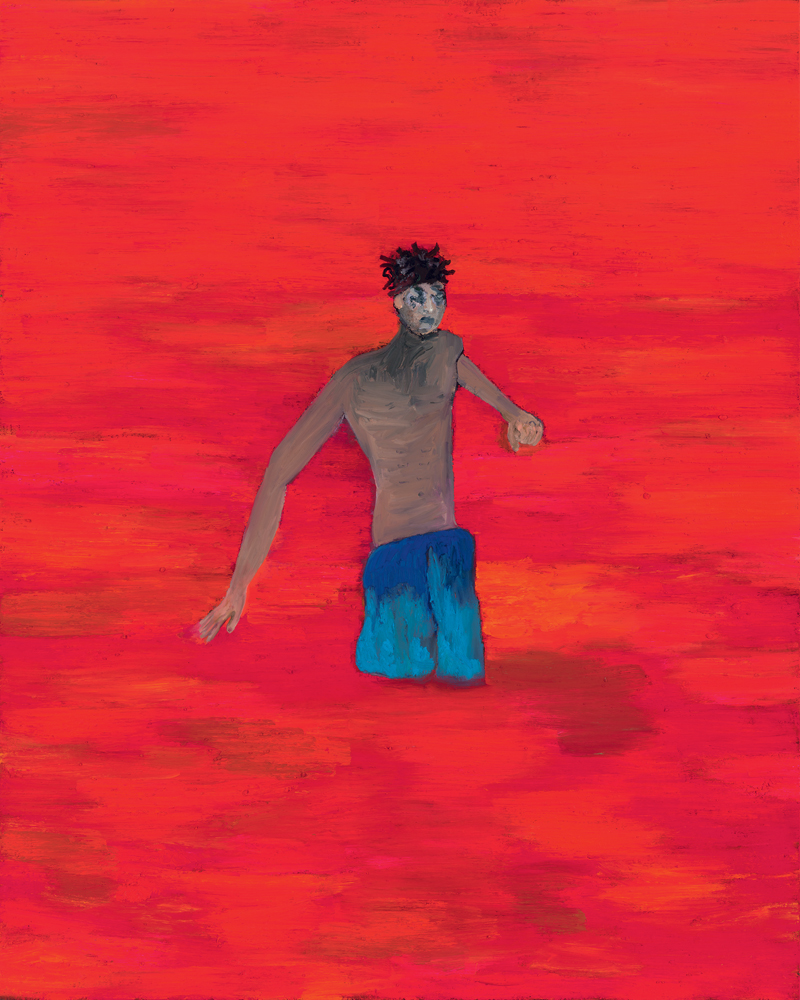
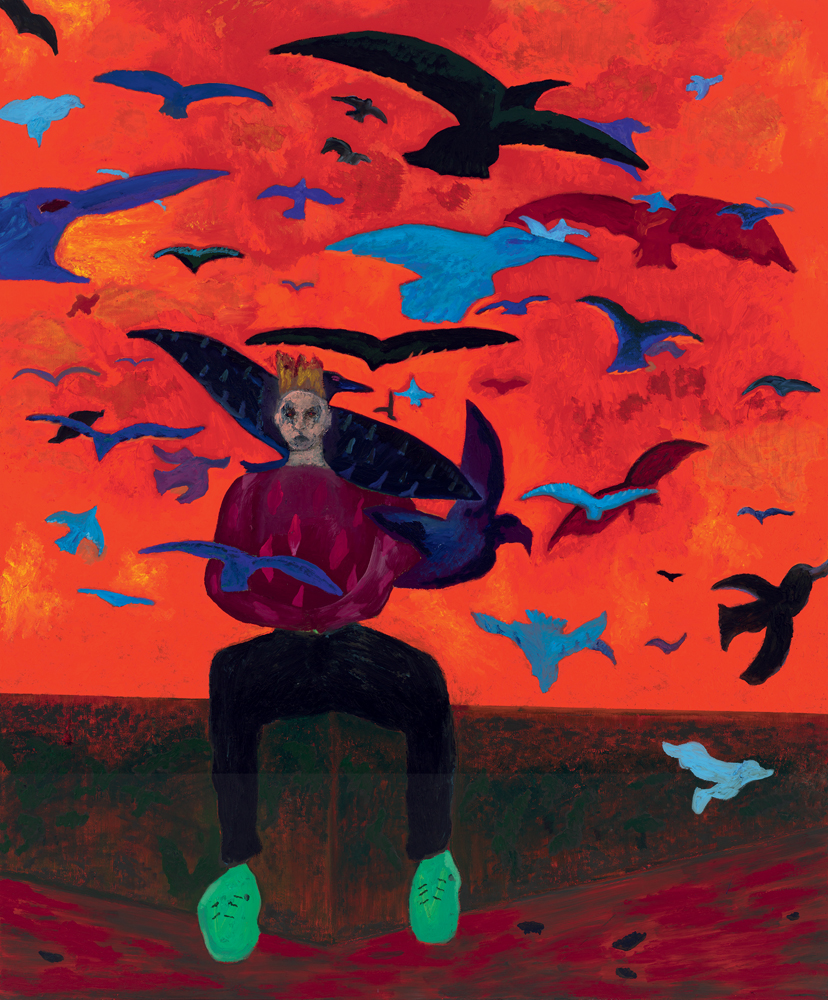
HUO : Goya also seems to have played a role in your art. Your Pride painting in the exhibition references him. Can you tell us more about that?
Florian Krewer ; I’m totally fascinated by Goya’s work, particularly his engravings. Nowadays, leading the life you want in society as an individual is pretty difficult, painful even. It seems to me that the human aspect is completely forgotten. Whenever you meet someone new – except in New York City, where it’s no longer quite like that – the first questions you get are “What do you do for a living?”, “Where do you live?”, etc. Everything is classified, the focus is on what we produce, on performance. The human is pushed to the background. It’s pretty scary. And when you feel very feminine, for example, you constantly have problems. All these difficulties, these obstacles, end up having an impact on you.
In the recent paintings of yours that I’ve seen from the past two, three or four years, on the one hand there’s a rather subtle use of colour, and on the other things with more thickness, almost somewhere between 2D and 3D. It all started around the same time, right?
Florian Krewer : I try to challenge myself. My goal is to reinvent something each time with painting. There is a lot of thickness in some of my works. But I don’t intend to carry on doing that indefinitely. Instead, I want to alternate between thin layers and thicker layers, depending on what I want to emphasize. It’s fascinating what you can do with paint and colour!
Colour. That’s exactly what I wanted to talk about next. A few weeks ago, I was with the amazing Etel Adnan, a 97-year-old artist who paints small-format canvases and also writes poetry. She has worked a lot with colour. According to her, red always wins! There are a lot of different reds in your work. Why is this particular colour so important to you?
Florian Krewer : Yes, I use red a lot. Even if all reds are red, I make a distinction, of course, between red, pink, orange, etc. You can see it in the reproductions, but it’s difficult sometimes. You can consider that it’s all red, actually. To be honest, I follow my instinct. In my small-scale works, I needed to go all out with colour. Before, it was less present, darker. I’ve been to Miami, I think the light there impressed me, especially in the evening. I guess I needed to transcribe it. But since I tend to exaggerate, to go all the way with an idea, I think I’ll try to be more sober in my next paintings.
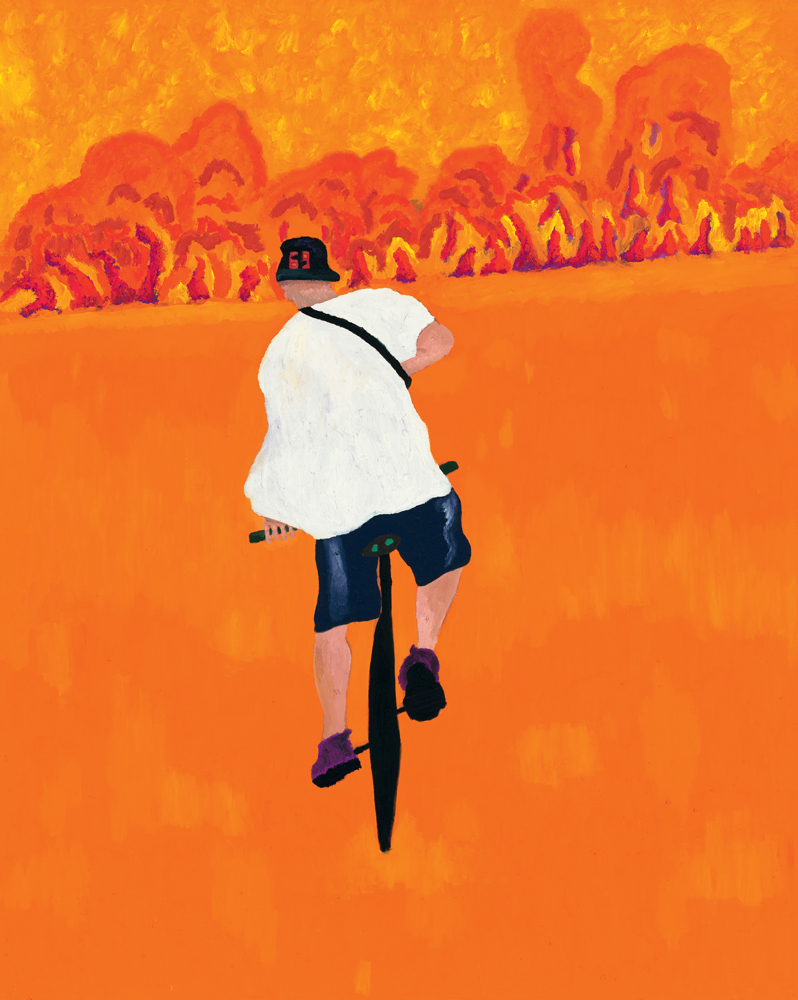
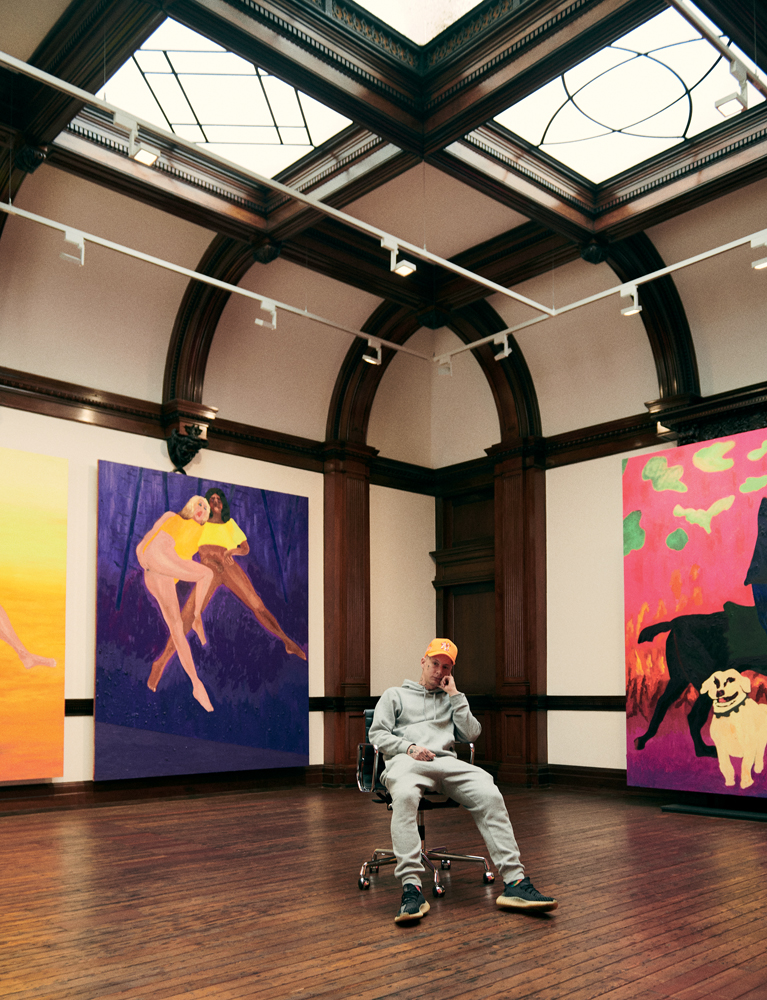
HUO : In the monograph you recently published with Loewe, there are several photos…
Florian Krewer : Those photos are important to me. They are a mix of different things. It’s not my goal, but sometimes I copy compositions from photographs. Most of the time, different parts inspire me for a drawing – I make collages of them in my head, taking here and there what interests or touches me.
HUO : Are these often performance situations?
Florian Krewer : Yes. For example in Miami, outside a strip club. We chatted to the bouncer, in particular about the issue of wearing a face mask. He told us he was tired of them and showed us how he got round it simply by putting a thing on his face. That kind of situation doesn’t happen every day. Often, I also manage to take a photo.
HUO : In the monograph, a text by Stanton Taylor points out something I’ve also observed myself, which is that there are often animals in your paintings, especially in the recent ones. It’s as though they were avatars. Taylor alludes to a latent but symbolic violence. Sometimes they act as “desires,” as “non-verbal social norms.” Can you talk about this?
Florian Krewer : Yes. The hardest part of my life was my late childhood and adolescence, between 11 and 19. I was living in a climate of violence, though I didn’t perceive it as such. I used to hang out with my friends a lot, and the way we communicated, what we did, the fights, it was all pretty aggressive… I think that marked me quite a bit. On the one hand, I find it good, because it allowed me to toughen up, even at art school. Many students, for example, couldn’t take criticism, but for me it was pretty easy, because I’d already been through much more difficult situations as a child. It was a whole other dimension. Whatever you’ve been through comes along with you, it marks you in a way. So it’s quite natural that these feelings come through in my paintings – the tensions simmering in society, even in New York where everything is cooler. Problems between people really affect me a lot, and so I have like this need to paint it. Maybe to get all the pain out of my body… When you’re a kid, that’s a bit of an issue: if you want to express some – thing about femininity, it’s impossible.
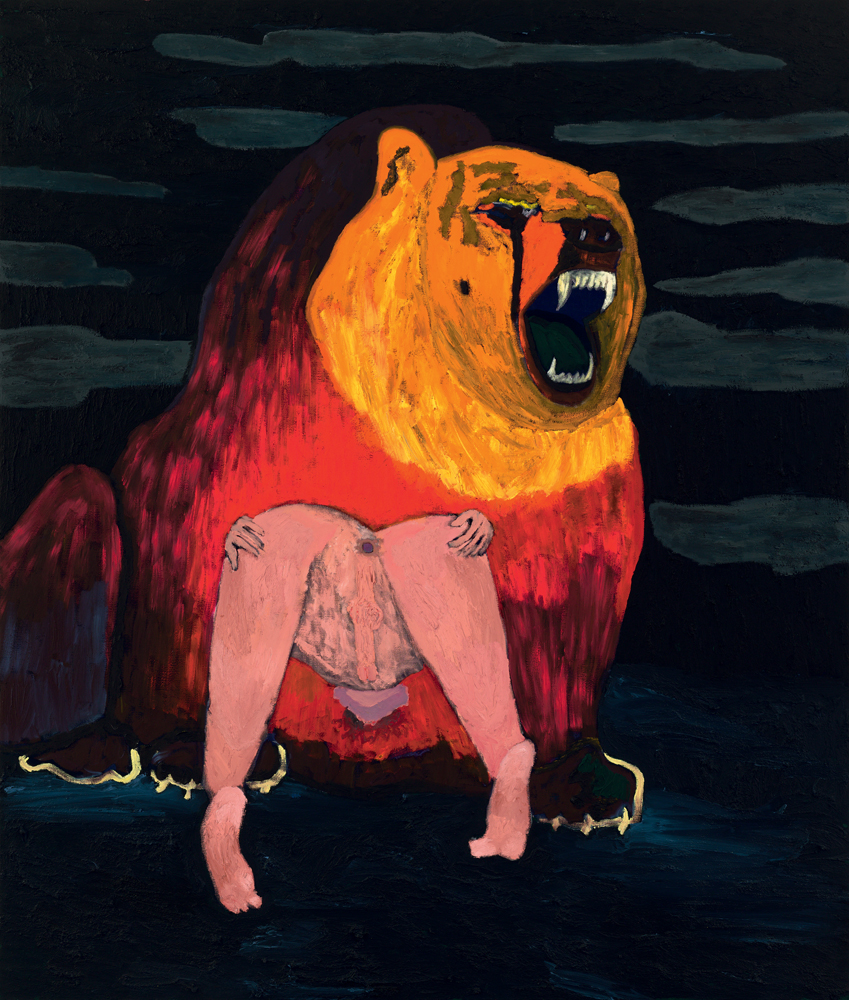
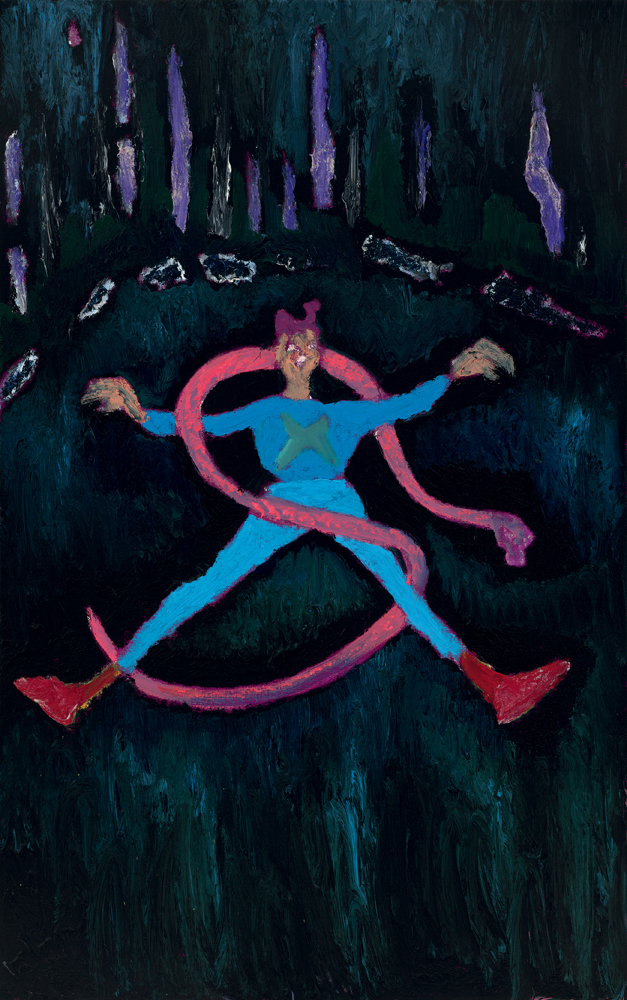
HUO : So you repressed it?
Florian Krewer : Yes. Because if I’d expressed it, I would have been laughed at, made fun of, humiliated. It’s still the case today. Of course, with your friends, it’s fine, you can live as you see fit. But in society, people won’t hesitate to look at you askance, to hurt you. Society’s image of masculinity is very cliched: the way men think, how they should behave, etc. I strongly disagree with all of this. Of course, no one wants to be seen as weak, we want to be accepted. It’s quite painful not being able to be yourself, not being able to act freely. It’s like you don’t belong, and that’s really hard.
HUO : What is the title of your exhibition in London?
Florian Krewer : Ride or Fly… No matter how tough a situation is, you have to stay positive. Sometimes it’s good when someone wants to destroy you – resistance strengthens you.
HUO : What’s the title of the painting where you appear on your bike?
Florian Krewer : Ride or Fly 1. It’s a photo – a friend took a photo of me, in summer, during lockdown. I rode a lot then.
HUO: What do the animals in your work represent?
Florian Krewer :Take the bear, for example: for me the bear expresses pain, the pain you carry inside. He tries to shout it out, but at the same time, you want to hug this bear. There are many facets I find – it’s exhilarating.

HUO : One of your paintings is almost monochrome. I read somewhere that you admire Titian, who used red a lot too. Is that a reference to him here?
Florian Krewer : Yes, a little. In fact, I’d painted something else underneath. It’s quite rare that I completely cover over a painting, but in this case it soon became clear that what I’d started painting didn’t work. So I repainted over it with the drowned character. Here I was inspired by Titian, yes. I really struggled with the background. I had an idea, like for the small version, but it was impossible to translate into a larger format. So I did several tests. From here I drew a horizon line, which is almost imperceptible at the edge. The tones tend towards pink, and at the top it’s really red.
HUO : As its title suggests, Night Chapter depicts a night scene.
Florian Krewer : Yes. It’s the view from a friend’s house over Queens. For me, with respect to sexuality, the fact that you have extreme sexual needs, you can almost say that you reduce your partner to a piece of meat. I exaggerated it, that’s why the feet are cut off. Because it bothers me in part, having this need, being focused on sex. It can be a burden sometimes, and that’s what I wanted to express.
HUO : It’s little bit reminiscent of Bacon…
Florian Krewer : Yes, it is. Bacon is a bit of a model for me.
HUO : There’s a sort of chapel at the heart of the exhibition. What are you showing there?
Florian Krewer : A painting that represents a friend, for example. I met her in Thailand, she’d just started taking hormone treatment. She’s planning to have the operation as it happens. I know someone else who has had gender reassignment surgery. It’s pretty crazy when you think about it, this really violent intervention on your own body. The inspiration for this painting came from that, and from sexuality. And from strange events… As for Falling Roses, it goes a little bit in the direction of my sexuality. When you feel more like a woman, but were born in a man’s body…
Florian Kremer is represented by the Michael Werner’s gallery.






